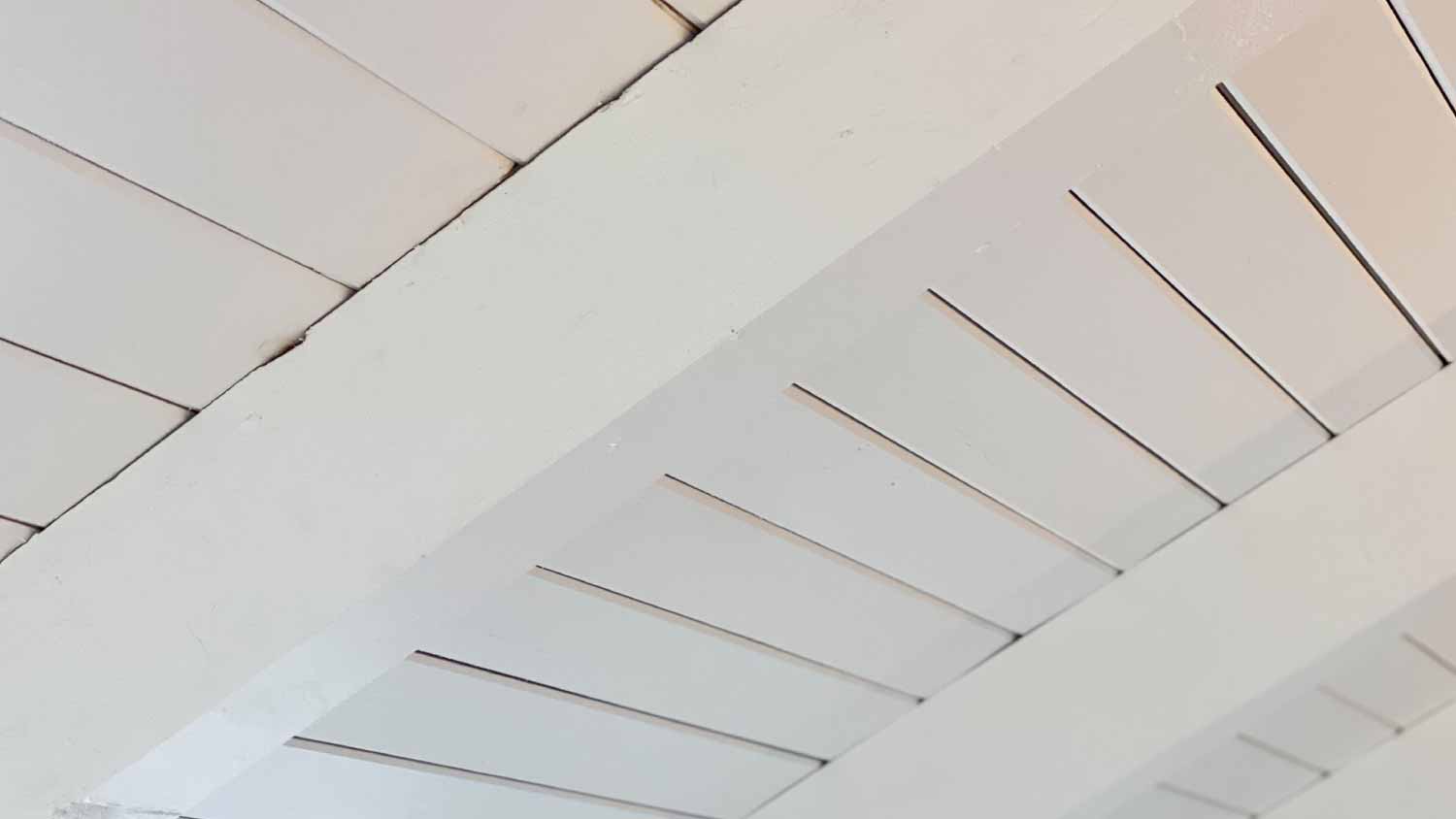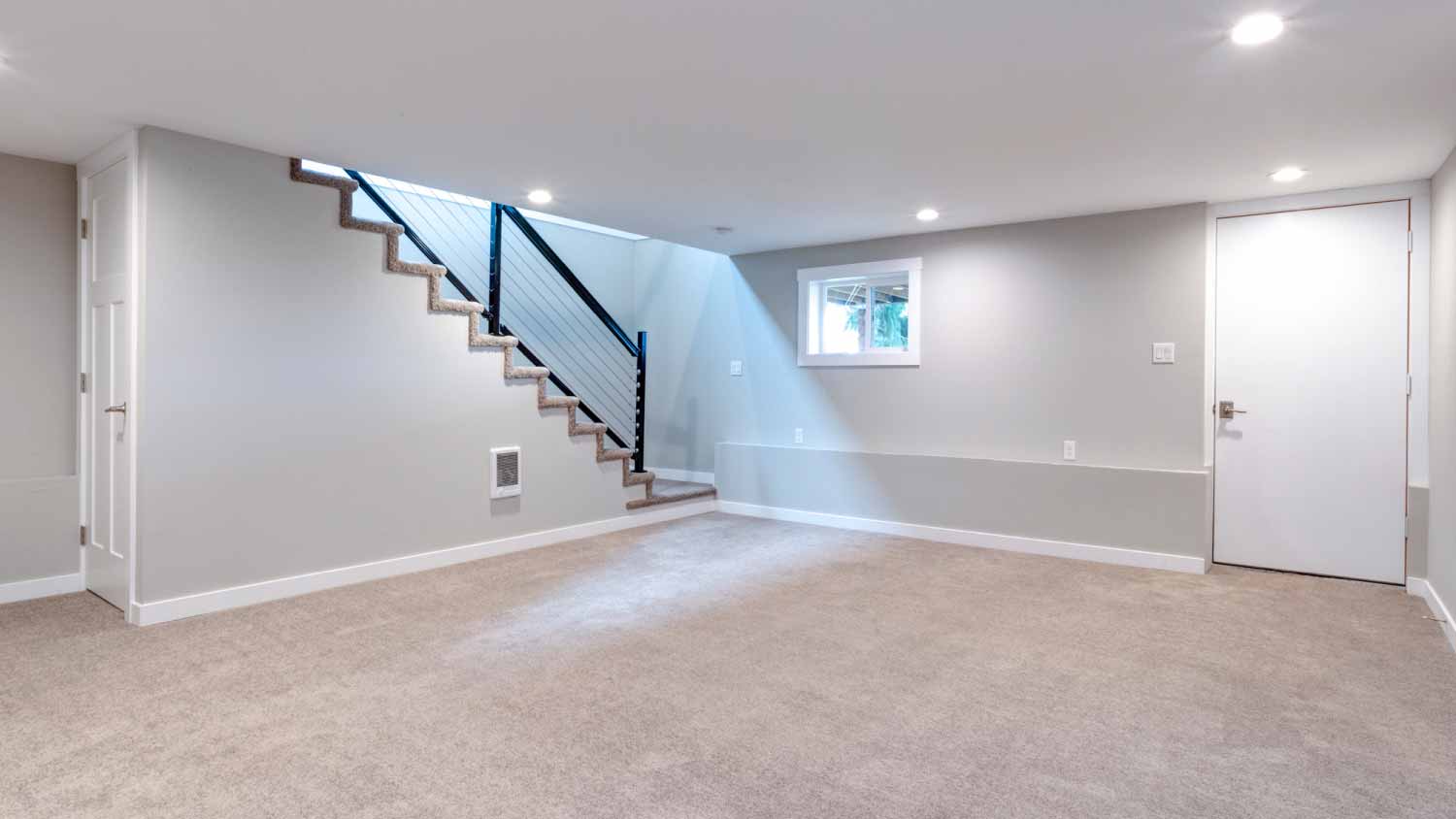6 Basement Ceiling Options: Everything You Need to Know
The basement may be underground, but its ceiling still matters


Covering basement ceilings with the right material can be challenging with exposed joists, beams, pipes, ductwork, and conduit to work around. Fortunately, you have a few ceiling options for basements that work beautifully. The six primary basement ceiling options are drywall, tiles, wood panels, PVC panels, metal, and paint. Each basement ceiling option has pros and cons that you can weigh to find the perfect material for your design.
| Basement Ceiling | Biggest Benefit |
|---|---|
| Drywall | Traditional look |
| Tiles | Easy to install |
| Wood panels | Sharp and stylish |
| PVC panels | Resists moisture |
| Metal | Unique design |
| Paint | Easy and inexpensive |
1. Drywall

When you want your basement ceiling option to fit in with the rest of the home, drywall is the go-to material. Modern homes use drywall in ceilings and walls almost exclusively on the upper floors. Using drywall in the basement ceiling maintains that consistency. You can easily paint it or add a texture. However, working over your head to hang and finish drywall can be tiring work to do yourself. You may wonder who to hire to finish a basement ceiling with drywall. A local drywall contractor is the right professional to do this work.
| Pros | Cons |
|---|---|
| Looks consistent | Tough to install |
| You can add paint or texture | No access panels |
| Good noise reduction | Not good in dampness |
Best for: Those who want to match the basement to the rest of the home’s ceilings.
2. Tiles
One of the most popular alternatives to drywall in a basement ceiling is tiles. Many people will select drop tiles for a basement ceiling option when they want something they can install quickly. Older drop tiles didn’t offer much style. However, newer models have multiple colors and designs available that create a high-end look that wasn’t possible in the past.
Drop tiles often fit inside a hidden metal grid that hangs a couple of inches below the lowest part of the ceiling. Tiles you glue directly to the ceiling are available, too, but they don’t work on uneven ceiling surfaces.
| Pros | Cons |
|---|---|
| Easy to install | May not look appealing |
| Decorative designs | Some lost headroom |
| Easy access to pipes | Not very durable |
Best for: An easy-to-install option where you can access pipes and ductwork later.
3. Wood Panels

Wood panels and planks can create a unique design for your basement ceiling. Whether you choose to install planks, beadboard, shiplap, or another type of wood, these materials give the basement a cozier feel. Darker stained wood may fit better with a basement bar or game room, while shiplap and beadboard deliver a casual style. You can create access panels naturally in the wood design to reach pipes or ductwork inside the ceiling.
| Pros | Cons |
|---|---|
| Can be painted or stained | Tough installation |
| Create access panels | Pricier than others |
| Prefinished options | Issues with moisture |
Best for: Those who want a highly stylish option that’s paintable.
4. PVC Panels
PVC panels are a durable basement ceiling option that can withstand moisture. Manufacturers can make PVC panels with simple textures to enhance the overall design. Reflective white is the most common color, which can brighten up a basement without windows. However, some people do not like the look of PVC material as a basement ceiling option.
| Pros | Cons |
|---|---|
| Waterproof material | Can look unattractive |
| Easy to install | No access panels |
| Reflects light | Only simple textures |
Best for: Those who need a waterproof basement ceiling option.
5. Metal
Metal may not be the first material you think of for ceiling options for basements, but this uniqueness is part of the appeal. A tin ceiling may remind you of an old pub, while a corrugated metal ceiling has a rustic feel. Some people may choose to use metals like copper as an accent to other basement ceiling options. Metal can be challenging to work with because of sharp edges and the possibility of creating dents during the installation. It also can be pricier than some other materials.
| Pros | Cons |
|---|---|
| Striking design | Challenging install |
| Use varying metals | Pricey materials |
| Good for accents | No access panels |
Best for: Those who want a striking design in the basement ceiling.
6. Paint

Don’t just dismiss the idea of simply painting the exposed basement ceiling. Paint is an inexpensive option, giving you more money to spend on other aspects of finishing the basement. Using black or white paint across all the pipes, ductwork, beams, and joists is a common choice. Solid colors allow the pipes and ducts to blend into the ceiling. By leaving these materials exposed, you still have a slight industrial feel in the space. Black paint hides these items better than white paint.
| Pros | Cons |
|---|---|
| Simple application | Leaves pipes visible |
| Inexpensive option | Requires a sprayer |
| Easy access to pipes | You may dislike the look |
Best for: Creating an inexpensive ceiling covering with a slightly industrial feel.
Can I Install a Basement Ceiling Myself?
If you have some experience with DIY projects, you certainly could install your basement ceiling yourself. Doing at least some of the tasks required to finish a basement yourself can save you quite a bit of money. The cost to finish a basement runs $15,000 to $75,000 for a pro to do the work. However, you could save about $1,200 by installing a drop ceiling yourself, which is about half the average cost to install a drop ceiling using a pro.
Of course, it’s also important to install the ceiling and finish the basement properly. Keep in mind that a finished basement adds value to a home. When completed in a professional manner, the return on investment for a finished basement is between 50% and 80% of your cost. With that idea in mind, it’s worth reaching out to a local basement finishing professional for an estimate.





- The Pros and Cons of Painting Your Basement Ceiling
- 7 Creative and Beautiful Basement Ceiling Ideas
- 12 Exposed Basement Ceiling Ideas
- How High Is the Average Ceiling? Standard Ceiling Height and Measurement Tips
- 8 Tips for a Smooth DIY Basement Remodel, From Drainage to Drywall
- 6 Ways to Cover a Popcorn Ceiling Without Removing It
- What Are Ceiling Tiles Made Of?
- 5 Ways You Can Raise Your Ceiling
- How to Soundproof a Ceiling: A Complete Guide
- Painting Ceiling Same Color as Walls: Pros and Cons










